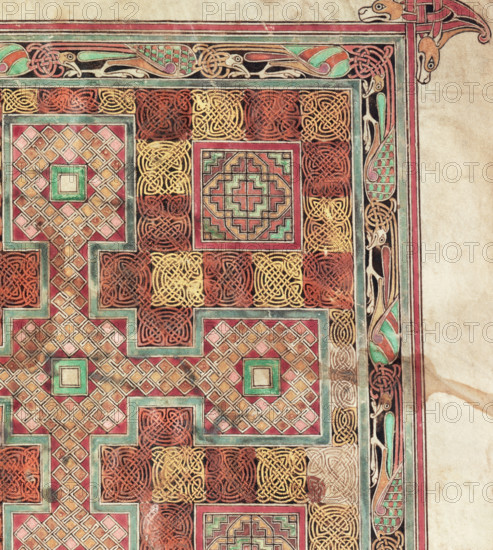
Légende
Detail from the Lindisfarne Gospels, c698. The Lindisfarne Gospels is one of the most important items of Britain's literary heritage. The book was written and illuminated at the monastery of Lindisfarne, on Holy Island, off the Northumbrian coast, about 698 CE in honour of St Cuthbert, the Bishop of Lindisfarne, who died in 687. The Gospels remained at Lindisfarne until 875, when it accompanied the monks on their flight from the invading Danes. From 883 to 995 the Lindisfarne community remained at Chester-le-Street, near Durham, finally settling at Durham itself in the latter year. The manuscript probably lost its original binding at the time of the Dissolution of the Monasteries in the 16th century. Early in the 17th century it was acquired by the antiquarian Sir Robert Cotton and added to his substantial library.
Date
698e siècle
Crédit
Photo12/Heritage Images/Heritage Art
Notre référence
HRM25A15_449
Model release
NA
Property release
NA
Licence
Droits gérés
Format disponible
50,0Mo (3,9Mo) / 33,5cm x 37,3cm / 3961 x 4411 (300dpi)